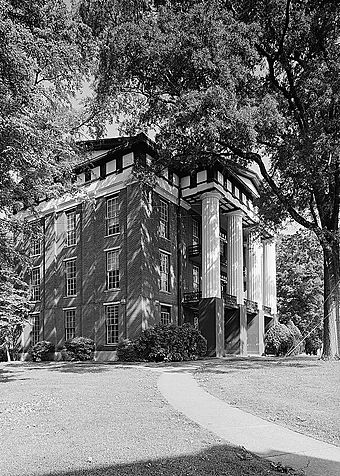Swayne Hall, Talladega College facts for kids
|
Swayne Hall, Talladega College
|
|
 |
|
| Location | Talladega College campus, Talladega, Alabama |
|---|---|
| Area | less than one acre |
| Built | 1857 |
| Architectural style | Greek Revival |
| NRHP reference No. | 74002223 |
Quick facts for kids Significant dates |
|
| Added to NRHP | December 2, 1974 |
| Designated NHL | December 2, 1974 |
Swayne Hall is the oldest building at Talladega College in Talladega, Alabama. It was built in 1857. This building is very important because it was made a National Historic Landmark in 1974. This honor recognized Talladega College's special role. It was one of the few historically black colleges and universities (HBCUs) that focused on a "liberal arts" education. For many years, it was the only college in Alabama where African Americans could get this type of education.
What is Swayne Hall?
Swayne Hall is a large building on the campus of Talladega College. It has three stories and is made of brick. The front of the building has a grand entrance. This entrance features four tall, round columns. They support a triangular roof section, like an ancient Greek temple. There are also fancy metal balconies on the second and third floors.
Building History
The building was first built in 1857. It was meant for a college for Baptist men. The construction involved the labor of enslaved people. In 1867, the American Missionary Association bought the building. They then started Talladega College there.
The hall is named after Wager Swayne. He was a general in the Union Army during the American Civil War. After the war, he served as the military Governor of Alabama. This was during a time called Reconstruction. This period was about rebuilding the country after the war.
A Special College
Talladega College is one of a small group of historically black colleges and universities (HBCUs). Many schools in the late 1800s and early 1900s taught African Americans job skills. But Talladega College chose a different path. It focused on "liberal arts." This means students learned about many subjects. These included history, literature, science, and philosophy.
For a long time, Talladega College was the only place in Alabama. It was the only place where African Americans could earn a college degree. Many students from Talladega College went on to study even more. They often continued their education in graduate school programs.



